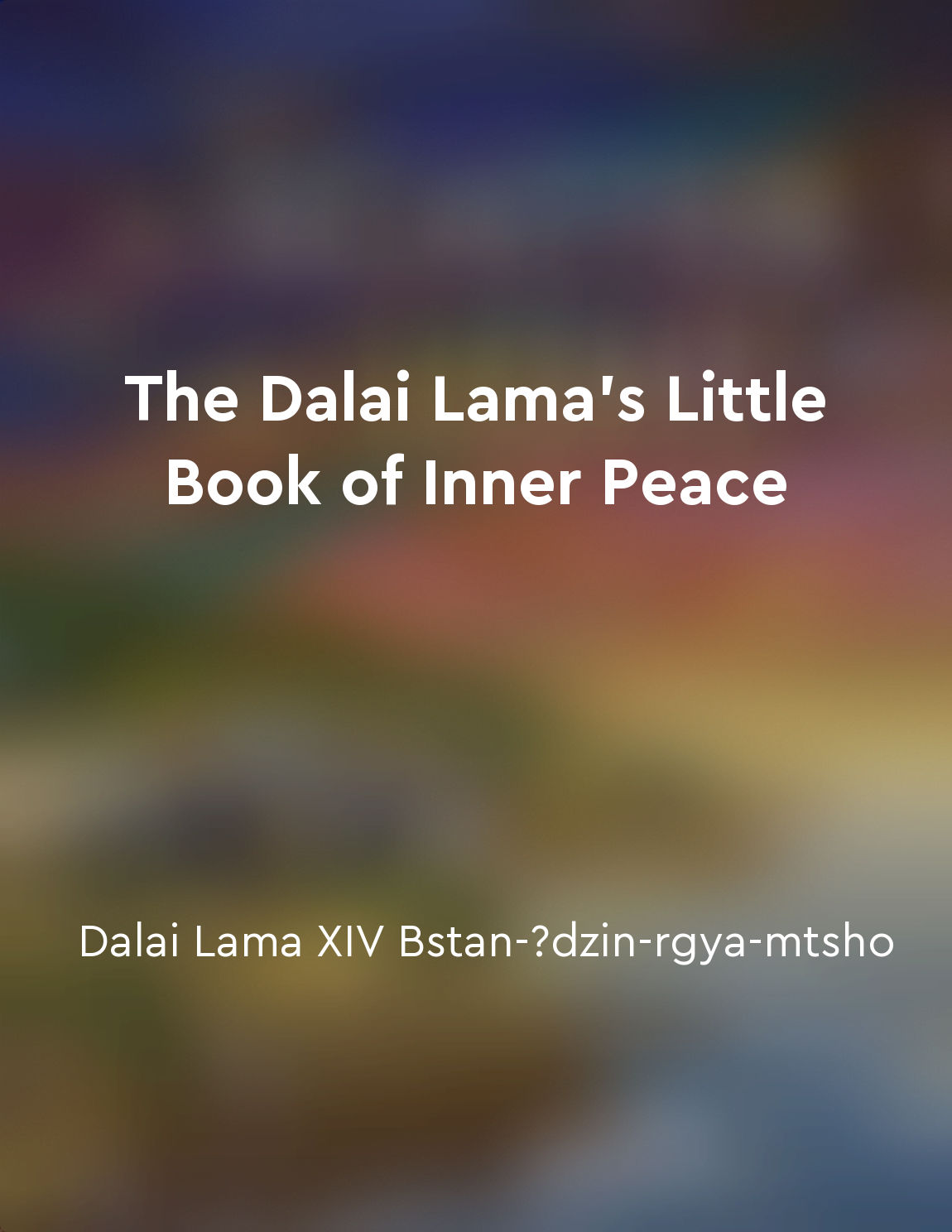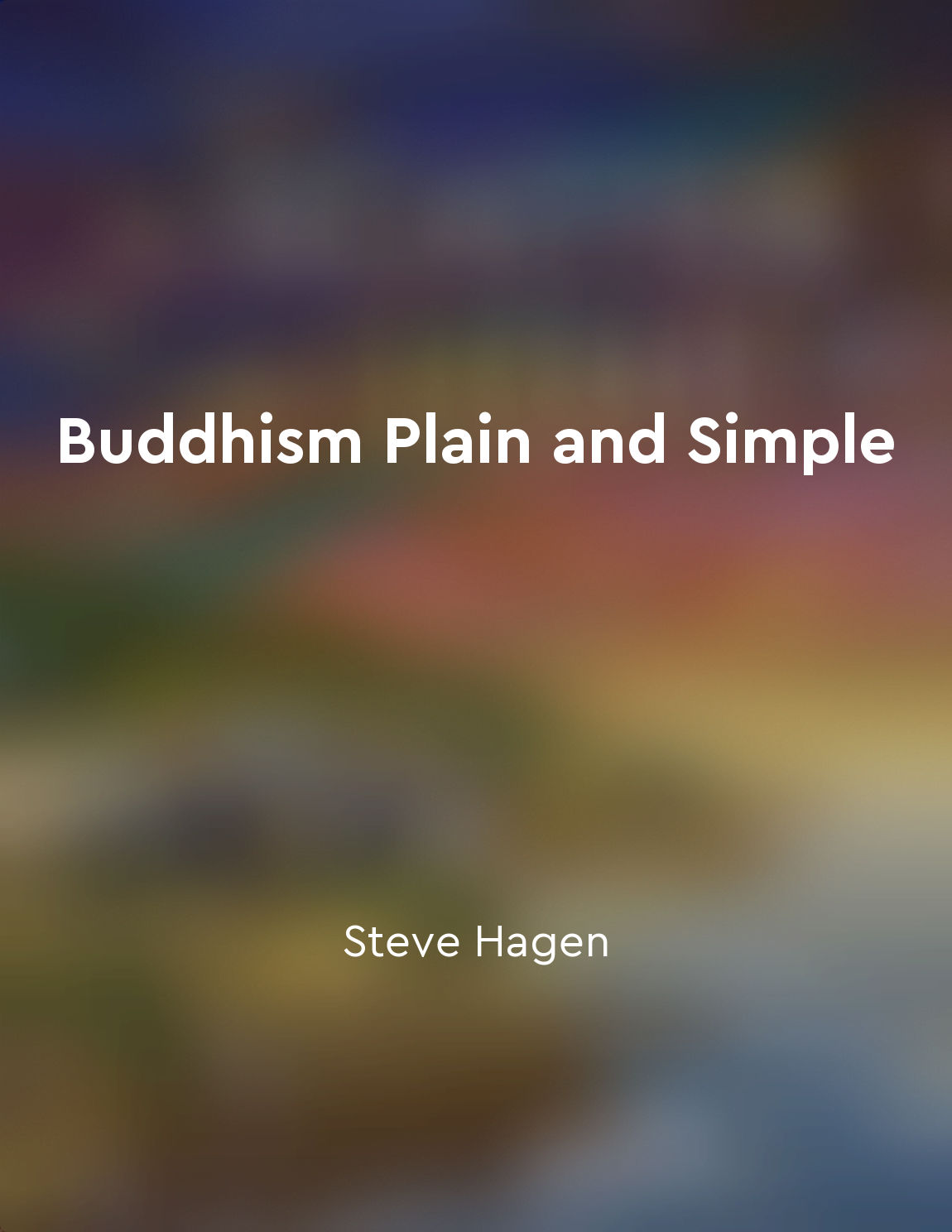Audio available in app
Our suffering is rooted in our attachments from "summary" of Buddhism Plain and Simple by Steve Hagen
Our suffering is rooted in our attachments. We suffer because we become attached to things that are impermanent. We cling to our desires and expectations, hoping that they will bring us happiness, but when they inevitably change or do not meet our expectations, we experience disappointment, frustration, and suffering. Attachments come in many forms - material possessions, relationships, beliefs, even our own identities. We become attached to the idea of who we are, and when that idea is threatened or challenged, we suffer. We hold onto our attachments tightly, thinking that they define us and give our lives meaning. But the truth is, attachments only serve to tie us down and create suffering. When we are attached, we are constantly seeking to protect what we have or to acquire more, and this leads to a never-ending cycle of desire and dissatisfaction. We are always looking outside of ourselves for happiness, never realizing that true contentment comes from letting go of our attachments and living in the present moment. In Buddhism, the goal is to cultivate non-attachment, or detachment. This does not mean becoming cold or indifferent, but rather letting go of our clinging and aversion. It means finding a sense of inner peace and contentment that is not dependent on external circumstances. When we are able to let go of our attachments, we can experience true freedom and liberation from suffering. By recognizing the role that attachments play in our suffering and cultivating non-attachment, we can begin to live more mindfully and authentically. We can let go of the things that no longer serve us and focus on what truly matters. In this way, we can find a deeper sense of peace and fulfillment in our lives.Similar Posts
Be grateful in spite of the suffering
Peterson argues that life is inherently full of suffering and pain. No matter who you are, you will face difficult times and ch...
The Three Yanas are the paths of Sravaka, Pratyeka, and Bodhisattva
The Three Yanas represent different paths to enlightenment in Buddhism. The Sravaka Yana is the first path, followed by those s...
Zen meditation can help individuals cultivate a sense of inner harmony and wellbeing
Zen meditation, as elucidated in 'Dogen's Manuals of Zen Meditation', offers individuals a pathway to establish a deep sense of...
Find peace in the rhythm of the natural world
The concept of finding peace in the rhythm of the natural world is a recurring theme in 'The Dharma Bums'. The characters in th...
Buddha emphasized compassion towards all beings
In the teachings of Buddha, the importance of compassion towards all beings is a central theme. Buddha's emphasis on compassion...

Cultivate a sense of inner tranquility
To cultivate a sense of inner tranquility means to develop a peaceful state of mind that is not easily disturbed by external ci...

Buddha's teachings revolve around the Dhamma
The teachings of the Buddha are centered on the Dhamma, which is the fundamental principle underlying his philosophy. The Dhamm...
Meditation can increase emotional intelligence
The practice of meditation has been shown to have a profound impact on emotional intelligence. By training the mind to focus on...
Explore the depths of your inner world
The journey of exploring the depths of your inner world is not a simple task. It requires courage and vulnerability to delve in...

Prioritize selfcare and well-being
It is essential to prioritize your own self-care and well-being. This means taking care of yourself physically, emotionally, me...

